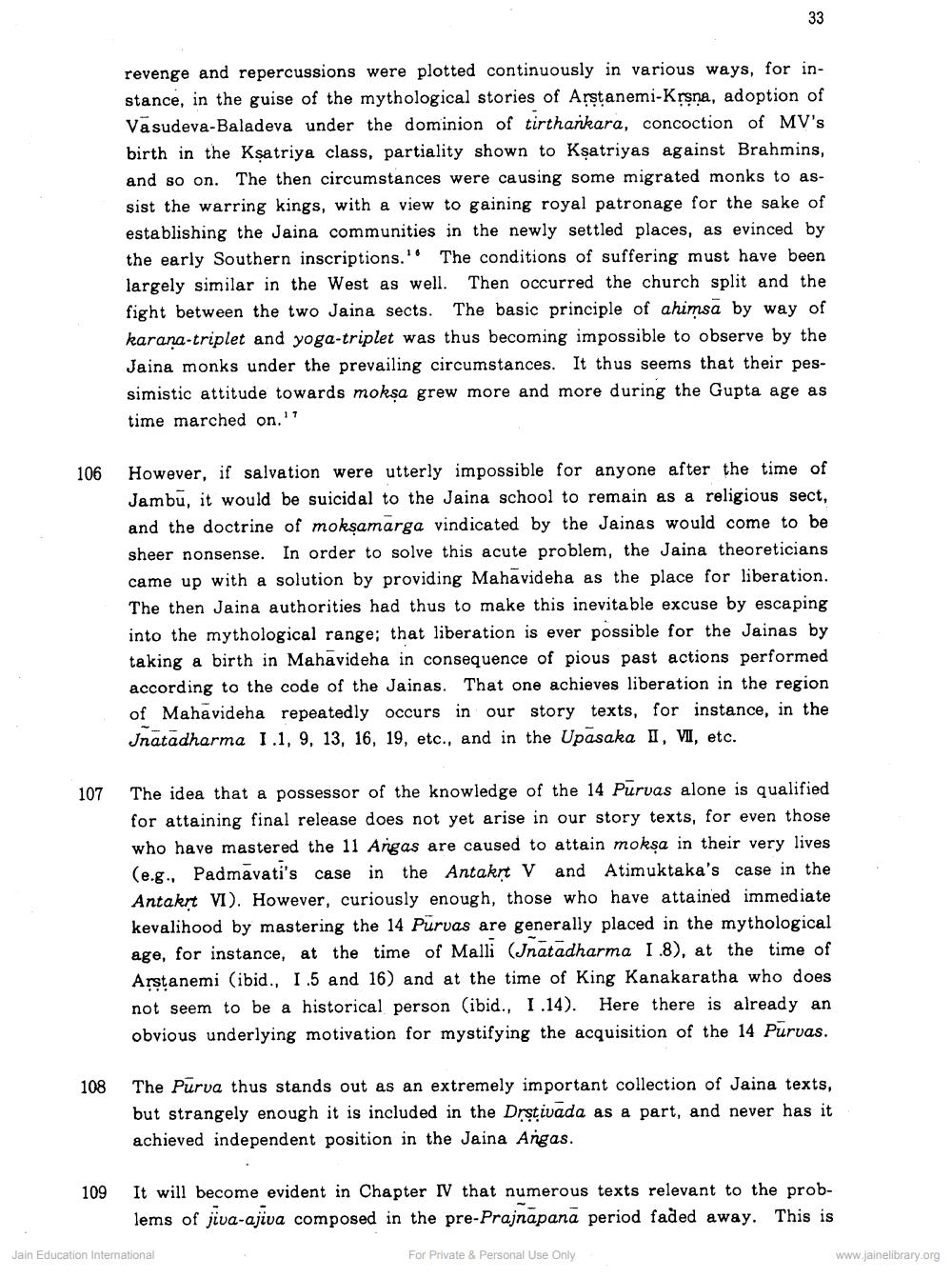________________
33
revenge and repercussions were plotted continuously in various ways, for instance, in the guise of the mythological stories of Arstanemi-Krsna, adoption of Vasudeva-Baladeva under the dominion of tirthankara, concoction of MV's birth in the Ksatriya class, partiality shown to Ksatriyas against Brahmins, and so on. The then circumstances were causing some migrated monks to assist the warring kings, with a view to gaining royal patronage for the sake of establishing the Jaina communities in the newly settled places, as evinced by the early Southern inscriptions. The conditions of suffering must have been largely similar in the West as well. Then occurred the church split and the fight between the two Jaina sects. The basic principle of ahimsā by way of karana-triplet and yoga-triplet was thus becoming impossible to observe by the Jaina monks under the prevailing circumstances. It thus seems that their pessimistic attitude towards mokşa grew more and more during the Gupta age as time marched on."
106
However, if salvation were utterly impossible for anyone after the time of Jambu, it would be suicidal to the Jaina school to remain as a religious sect, and the doctrine of mokşamarga vindicated by the Jainas would come to be sheer nonsense. In order to solve this acute problem, the Jaina theoreticians came up with a solution by providing Mahavideha as the place for liberation. The then Jaina authorities had thus to make this inevitable excuse by escaping into the mythological range; that liberation is ever possible for the Jainas by taking a birth in Mahavideha in consequence of pious past actions performed according to the code of the Jainas. That one achieves liberation in the region of Mahavideha repeatedly occurs in our story texts, for instance, in the Jnatadharma 1.1, 9, 13, 16, 19, etc., and in the Upasaka I, VII, etc.
107
The idea that a possessor of the knowledge of the 14 Pūrvas alone is qualified for attaining final release does not yet arise in our story texts, for even those who have mastered the 11 Angas are caused to attain mokṣa in their very lives (e.g., Padmavati's case in the Antakrt V and Atimuktaka's case in the Antakrt VI). However, curiously enough, those who have attained immediate kevalihood by mastering the 14 Purvas are generally placed in the mythological age, for instance, at the time of Malli (Jnatadharma 1.8), at the time of Arstanemi (ibid., 1.5 and 16) and at the time of King Kanakaratha who does not seem to be a historical person (ibid., 1.14). Here there is already an obvious underlying motivation for mystifying the acquisition of the 14 Purvas.
108
The Purva thus stands out as an extremely important collection of Jaina texts, but strangely enough it is included in the Drstivāda as a part, and never has it achieved independent position in the Jaina Angas.
109
It will become evident in Chapter IV that numerous texts relevant to the problems of jiva-ajiva composed in the pre-Prajnapanā period faded away. This is
Jain Education International
For Private & Personal Use Only
www.jainelibrary.org




